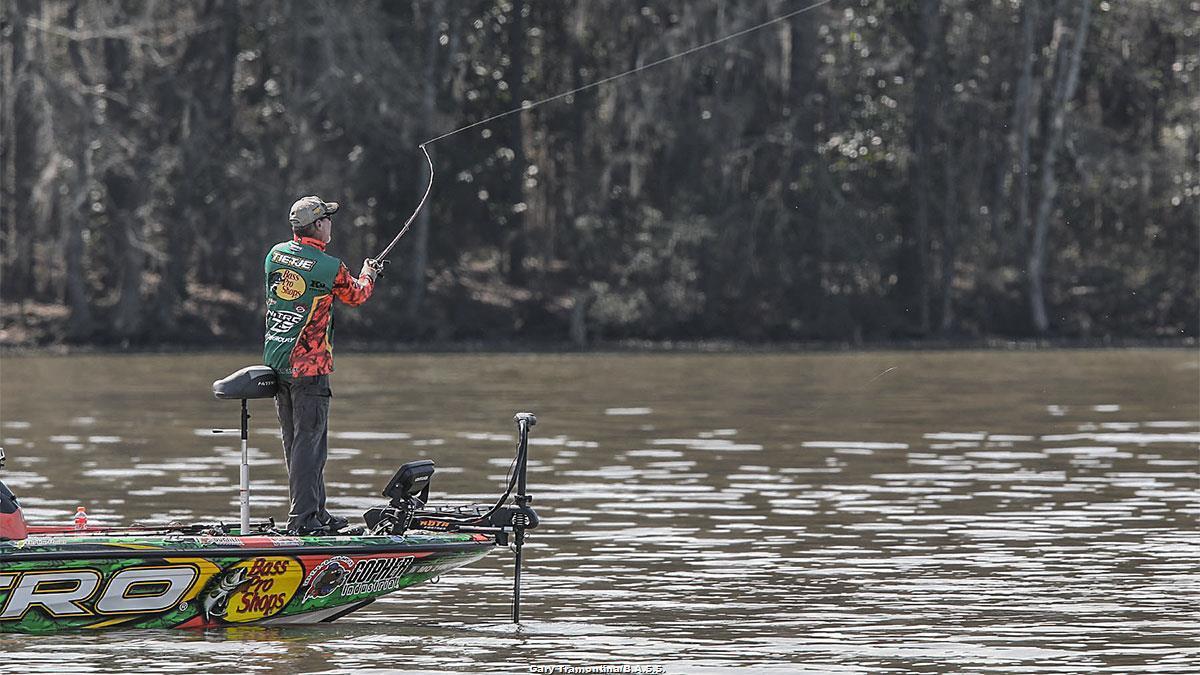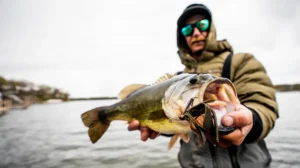Everyone has a fishing buddy who loves shallow water. You know—the guy with the chopped-up prop and a skeg polished down to bare metal. You’ll know him because his front locator is usually turned off and many of his rod guides are missing inserts from using it to tell the depth
These anglers are affectionately referred to as “bank beaters”. And spring is their time to shine.
No matter the lake—whether it’s a deep, clear, highland reservoir or a grassy natural lake, springtime bass will be moving shallow. The water is also at its seasonal high and the bass are on the feed, preparing for their upcoming spawn. Rains also wash lots of sediment into the water, causing even the clearest waters to stain, resulting in far less finicky feeding behavior and more options for anglers.
So, what does the combination of shallow bass and high, stained water mean? For many of us, it’s spinnerbait time.
Spinnerbaits are major fish producers throughout the spring. They allow anglers to cover a lot of water, you can fish ‘em through lots of snaggy cover and they’re known to generate strikes from giant bass.
After all of his time spent on the backwaters of the Mississippi Delta, Elite Series pro Dennis Tietje has become a spinnerbait expert. According to him, there are 4 things you can do in order to increase your success.
Size matter
Many anglers see spinnerbaits as a one-size-fits-all type lure and throw the same models no matter the conditions. To Tietje, that’s a big mistake. Especially in the spring when the bass are feeding on a large variety of different forage.
“You should always think about what you’re trying to imitate when you decide which spinnerbait to throw,” Tietje said. “Around here, in the spring most of the baitfish are super small, so I’ll actually throw a little 3/16 or 1/4-ounce spinnerbait with really small blades. It has a super small profile which really generates strikes. If you were to go down the bank throwing the same spinnerbait you throw in the fall, I can guarantee that you’re not going to catch nearly as many bass.”
To best match the hatch, Tietje always keeps an assortment of spinnerbaits in the boat, ranging from tiny 1/8-ounce models all the way up to 1/2-ounce for springtime duty.
“If you pay attention while you’re fishing, you’ll often get little hints as to the size of the forage the bass are feeding on,” Tietje said. “Sometimes you’ll see them scatter, or a bass will spit one out. Pay attention to that and try to get your spinnerbait to match the size profile of whatever baitfish are present.”
Let em’ see it
Bass rely on two senses—sight and vibration—for feeding opportunities. If they can’t sense your bait’s presence, they certainly can’t bite it. For that reason, it’s important to choose a spinnerbait that not only has the right profile, but also can be seen or felt by the bass.
“Even if you have the right profile, you’re not going to catch any fish if they don’t know your bait is there,” Tietje said. “The blade combination is what accomplishes that. Depending on the conditions, I may throw anything from a double willow combination for maximum flash all the way to a single Colorado blade for maximum thump.”
His general rule is simple—in clearer water you’re looking for more flash and in dirtier the water, more thump. Because of that, most often in clear water you’ll find him throwing a double willow, moving to a tandem Colorado/willow or an Indiana blade in stained water and finally to a single No. 5 Colorado in the muddiest water.
“I look at spinnerbait blades as a tradeoff,” Tietje said. “Willows have the most flash and Colorado’s have the most thump. Indiana blades are somewhere in the middle. I’ll steadily move down that continuum as the water gets dirtier.”
Rod selection is important
Because Tietje uses such a diverse array of spinnerbaits in the springtime, he relies on two different models depending on the conditions and type of blade he is throwing.
“Having the right rod is really important when throwing a spinnerbait in the spring,” Tietje said. “You need to be able to cast accurately around cover, feel subtle bites from lethargic bass and bring ‘em to the boat once you have ‘em hooked. If you have the wrong rod, you’re going to lose or miss more fish than if you’re set up properly.”
When using 3/16 or 1/4-ounce spinnerbaits around close cover, Tietje uses the 6-foot, 9-inch medium-heavy Denali Kovert Casting Rod paired with a 6.4:1 Bass Pro Shops Extreme Casting Reel and 20-pound BPS fluorocarbon line.
For heavier 3/8 or 1/2-ounce blades, or when he’s making long casts in open water, Tietje opts for the 7-foot, 2-inch medium-heavy Denali Kovert Casting Rod
“Shorter rods are more accurate, so the shorter Kovert performs best when I’m working cypress knees or in some of the smaller canals,” Tietje said. “When I’m covering big grass flats on a place like Toledo Bend though, I like the extra length and power of the bigger rod. It helps me get extra distance on my casts and bury the hook if one eats it at the end of the cast.”
Stay versatile
Above all else, Tietje believes angler must remain versatile when fishing a spinnerbait. Conditions can change by the hour and what you did last week—or even the day before—might cause you to strike out
“Versatility is hugely important in all aspects of bass fishing, but it is the primary thing to focus on when throwing a spinnerbait,” Tietje said. “You might be catching them tossing a 1/4-ounce spinnerbait along bank grass one day, and then the water comes up, gets dirty and pushes the fish up into the flooded cypress trees. In that case you might need to switch to a 3/8-ounce model with a big Colorado blade. I’ve seen that kind of change happen overnight on multiple occasions.”
For springtime spinnerbaiting, the bottom line is to pay attention to the conditions and experiment to ensure your lure mimics prevalent forage and emits the proper vibration. When these factors combine, it can turn into an unforgettable day on the water.












